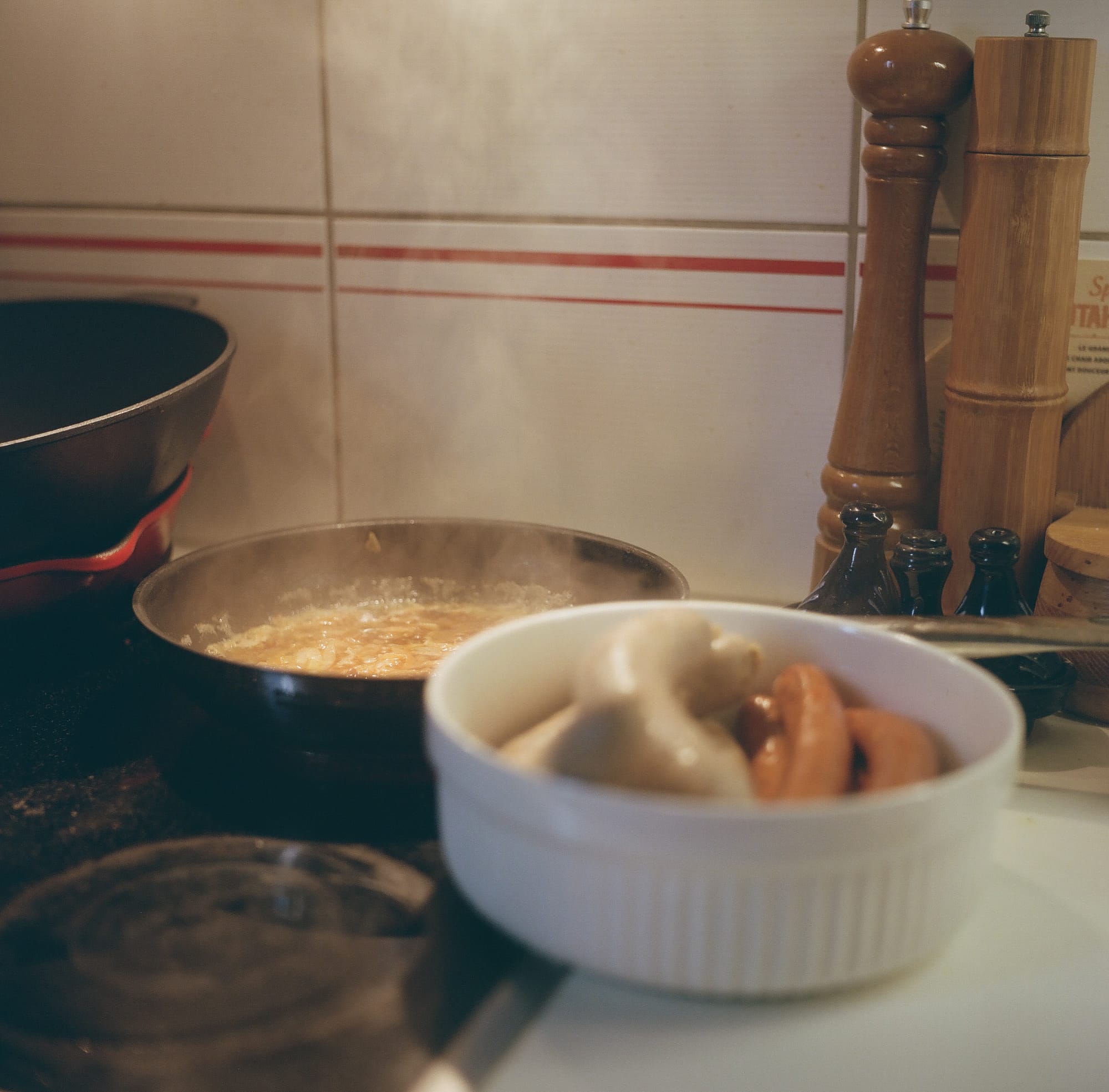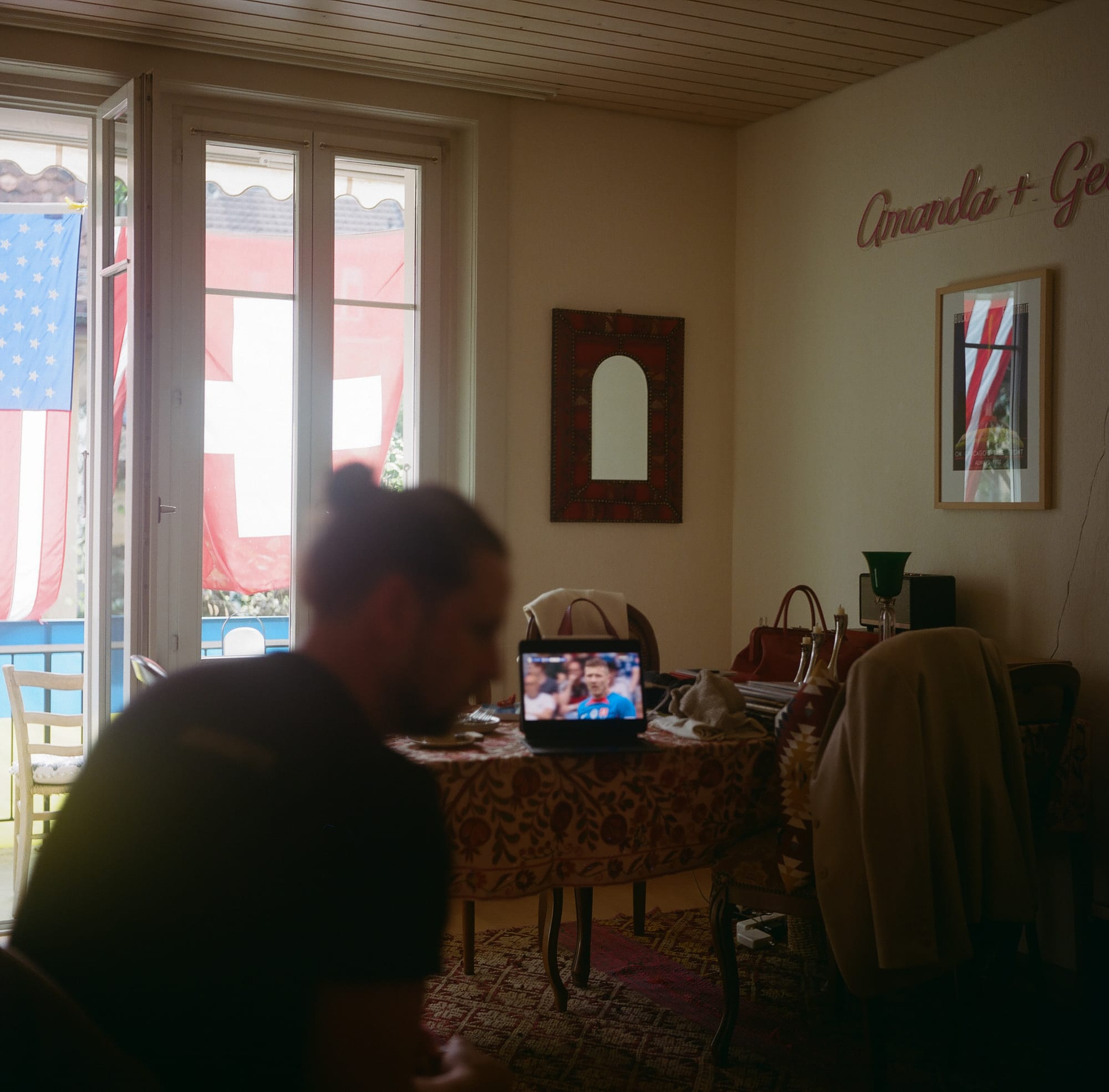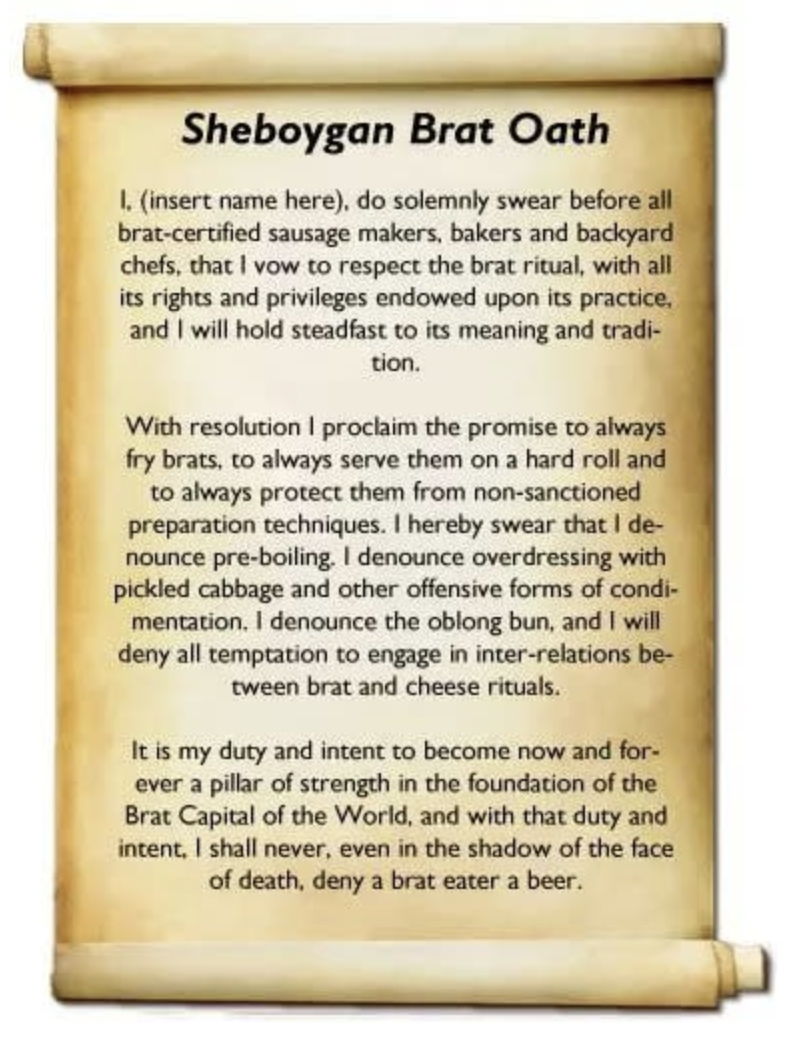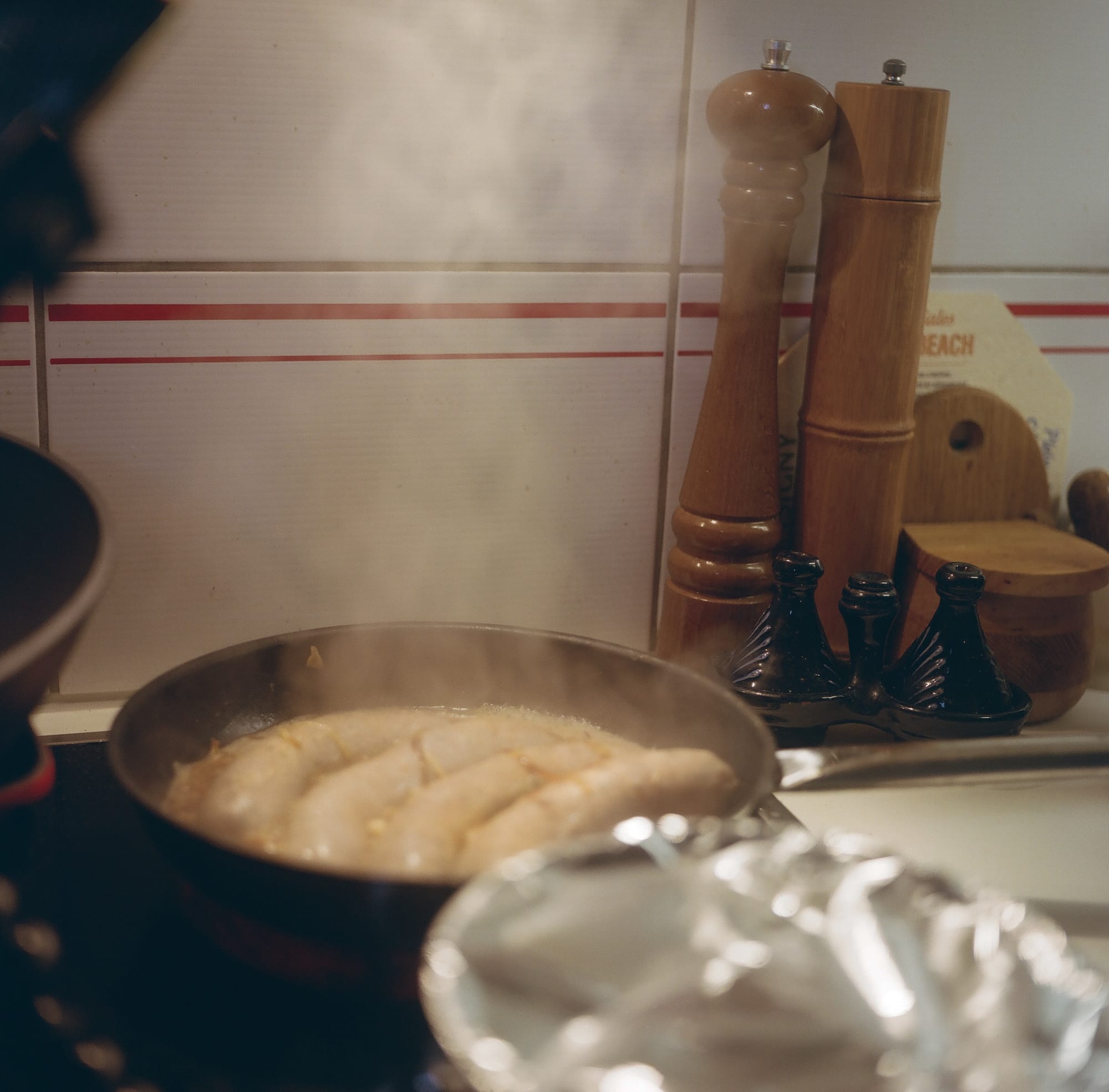What to eat GERMANY 🇩🇪 Beer-battered bratwurst (Wisconsin-style)
...the entire state of Wisconsin and Upper Midwest region of the United States are most familiar with is known in the old country as the Fränkische bratwurst. It is four to eight inches long (10-20 centimeters), thick and coarse. Yes, we are still talking bratwurst.

Beer-battered bratwurst (Wisconsin-style)
Published September 27, 2024 · by Amanda Rivkin Häsler
The first bratwurst as we know it was documented in 1313 in the Bavarian city of Nuremberg, a place still renowned for its production of grilling wurst, making it one of the oldest national dishes around. Recipes vary by town or region, with over forty varieties of bratwurst found in Germany. Many of the better-known versions of bratwurst can be found in Franconia or northern Bavaria, Thuringia to the north of Bavaria, and the adjacent areas.
The name bratwurst is derived from old high German (Hoch Deutsche) from the word brät, meaning finely chopped meat. In modern German, it is often associated with the word braten, to pan fry or roast. Wurst of course means sausage. In German-speaking countries including Germany, the neighboring countries of Austria, Switzerland and of course the U.S. state of Wisconsin, the seventeenth unofficial republic of Germany, which also happens to be where my mother is from, bratwurst is beyond common as to be ubiquitous.

Regarded as a relatively simple snack in Germany, German bratwurst is often served on a white bread roll made from wheat flour and garnished with mustard. As a pub dish, it might be accompanied by sauerkraut and potato salad. It is often served at small stands at fairs and also football games – both kinds of football (or soccer), in the old world and new. Beef or veal may be used as a substitute for pork in kosher and halal varieties, though pork is most traditional.

The bratwurst Americans, and my German-American mother and her ancestors, as well as pretty much the entire state of Wisconsin and Upper Midwest region of the United States are most familiar with is known in the old country as the Fränkische bratwurst. It is four to eight inches long (10-20 centimeters), thick and coarse. Yes, we are still talking bratwurst. The Fränkische sausage is the original that dates back to 1313 in Nuremberg that remains common across Franconia with slight variations.
Usinger’s Famous Sausage is a landmark of sorts in downtown Milwaukee, the biggest city by population in the state of Wisconsin, with just over 550,000 inhabitants. Usinger’s has been making bratwurst and other kinds of wurst in Milwaukee since Frederick Usinger left Wehen, Germany for the new world in the 1870s with just $400 in his pocket, not an insignificant amount of money in those days. Upon arrival in the new world, he opened up his eponymous wurst shop and sold sausages based on recipes he had acquired in Frankfurt, Germany.
Frederick Usinger’s arrival coincided with an era when many German butchers were making bratwurst in Milwaukee but adding their own touch. The archives of the Milwaukee Journal Sentinel newspaper reflect the fact that by the early twentieth century, bratwurst had found its way into “every aspect of Milwaukee life, from the dedication of the Wisconsin Telephone Company building on Fifth Street and Grand Avenue, to the meals supplied for artillerymen by Gustave Pabst of Pabst Brewing Company. Brats were also on the menu at a 1940s picnic in Grafton where German-Americans rallied against Nazism.”
In the United States, bratwurst is often called simply a brat or brats in the plural and is common at summer cookouts. Brats were introduced to the stadium cuisine options in 1954 when the Boston Braves moved to Milwaukee. Miller Stadium in Milwaukee, where the baseball team the Brewers play, sells more brats than hot dogs. It is the only ballpark in the nation that can make such a claim, though its brats are precooked and served on something like a hot dog bun. However, tailgaters in the parking lot before a game will surely offer a more authentic, true to the original flavor experience.
In the opposite direction of my mother’s hometown, Madison, Wisconsin hosts an annual Brat Fest over Memorial Day weekend, which marks the start of summer in the U.S. The Madison Brat Fest is billed as the “world’s largest bratwurst festival,” which may very well be the case.

Wisconsin has popularized its own version known as the beer-battered variety and we share that ancestral recipe with here. Legend suggests the beer-battered brat was popularized in the town of Sheboygan in the 1920s, not too far from my mother’s hometown. The town has a “Brat Oath” on its website to this day that concludes, “I shall never, even in the shadow of the face of death, deny a brat eater a beer.”
To make a Wisconsin-style beer-battered bratwurst, first onions are effectively caramelized, the brats are added, a light beer such as a pilsener is added and the brats bathe and pan roast in the beer before being grilled. The onions are then used as a condiment after the bratwurst is grilled on a plain round roll, which in the U.S. is known as a kaiser roll. How German!

Americans have also introduced varieties of brats that include cheddar and jalapeno. There are even hipster variations that take a haute spin on the ye olde Wisconsin beer battered brat, opting for a substitute of pinot noir instead and stuffings that include kale and feta in the mix with the pork in the casing.
However you brat, know that the Wisconsin-style is tried and true north country perfection. Select the ale of your choice, but a pilsener is in line with the tradition. And whatever you do, heed the flatlander Chicagoans’ golden rule about condiments on hot dogs and never, ever even think about adding ketchup.
Prost!
Recipe
Ingredients:
4 large white onions
1-2 tablespoons butter
Cracked pepper
1 German beer (we used Späten)
4 bratwurst
Step 1: Take out bratwurst so that it is at room temperature.
Step 2: Cut your onions. Place in a pan with melted butter and allow to sauté on low to medium heat.
Step 3: Stir as onions begin to brown. Add cracked pepper.
Step 4: Turn up the heat on the onions. Add the bratwurst until they brown slightly on one side. Add about half a cup of beer and once it starts to bubble, turn down heat to medium and cover one minute.
Step 5: Flip bratwurst and repeat with beer and cover with lid another one minute.
Step 6: Pull the bratwurst from pan but save the onions. Turn down the heat and allow the onions to slowly caramelize in the beer batter.
Step 7: Grill the bratwurst on both sides. Serve with Kaiser-like rolls and top with beer-battered onions, sauerkraut, pickles and mustard for a fully loaded, wholly satisfying bratwurst experience. You betcha!
Learn where to eat German food in Switzerland.
Follow our social media pages @swissglobaldining on Instagram, TikTok and YouTube